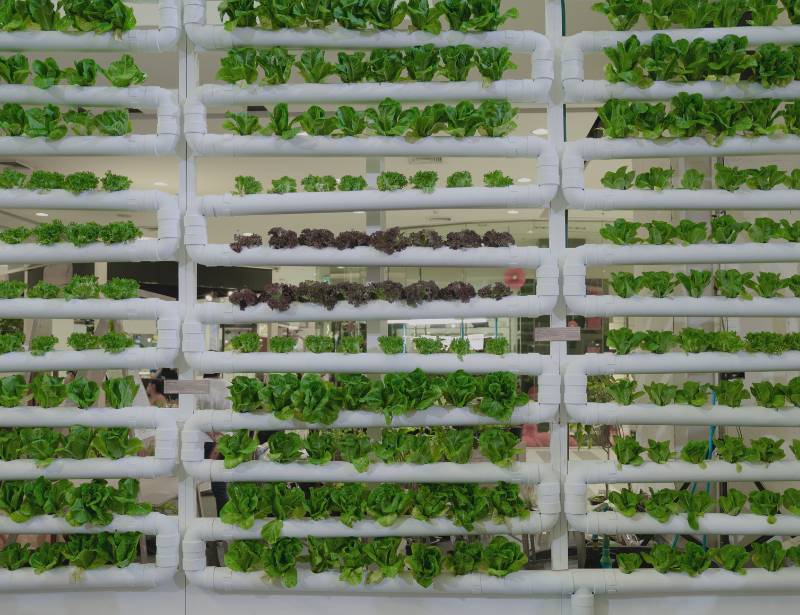
Have you ever strolled through a garden, marveling at the vibrant green foliage and colorful blossoms, and paused to consider the foundation of their growth? Traditionally, we've always associated plant growth with rich, dark soil. The earthy aroma and the texture of soil between our fingers have become synonymous with gardening. But what if there was a way to cultivate these green wonders without the need for soil?
Enter the realm of hydroponics, a revolutionary approach to gardening that challenges our conventional understanding. Hydroponics, derived from the Greek words 'hydro' (water) and 'ponos' (labor), literally means "working water." And that's precisely what it is - a method where plants are grown in a nutrient-rich water solution, bypassing the need for soil altogether. If you're new to this concept and want a detailed breakdown, check out our blog on "What is Hydroponics?".
This innovative technique isn't just a fleeting trend; it's rapidly becoming the future of indoor gardening. Especially in urban environments where space is a premium and soil quality is compromised, hydroponics offers a sustainable and efficient solution. From fresh herbs in your kitchen to expansive indoor farms, hydroponics is reshaping the way we grow our food and ornamental plants.
Without soil, how do plants obtain necessary nutrients? What sets hydroponics apart? Let's explore the fundamentals of hydroponics, its advantages, and its role in a more sustainable future.
Introduction to Hydroponics
At first glance, the idea of plants thriving without soil might seem counterintuitive. After all, for as long as humans have practiced agriculture, soil has been the primary medium for plant growth. But hydroponics challenges this age-old norm, presenting a unique and efficient alternative.
Hydroponics, at its core, is a method of cultivating plants without the use of soil. Instead, plants are grown in a nutrient-rich water solution, allowing them to absorb minerals and vitamins directly through their roots. It might sound like a concept from a futuristic sci-fi movie, but hydroponics has been around for centuries, with ancient civilizations using similar techniques for agriculture.
In a hydroponic system, plants are anchored using inert mediums such as perlite, Rockwool, or coconut coir. These mediums provide stability and support to the plants but don't supply any nutrients themselves. Instead, all the essential nutrients are dissolved in the water, allowing plants to absorb them directly through their roots.
A Glimpse into the Past
While hydroponics might seem like a cutting-edge technology, its roots (pun intended) trace back to ancient times. The famous Hanging Gardens of Babylon, one of the Seven Wonders of the Ancient World, is believed to have used a form of hydroponics. The gardens, although described in many ancient texts, remain a bit of a mystery, but many historians believe they were irrigated using the Euphrates River in a manner similar to hydroponic systems.
Similarly, the ancient Aztecs developed a system of floating gardens known as 'chinampas.' In these gardens, plants were cultivated on rafts in shallow lakes, with their roots submerged in the nutrient-rich water below.
Modern Hydroponics
The science of hydroponics has come a long way since these ancient civilizations. Modern hydroponic systems are sophisticated, allowing for precise control over nutrient levels, pH balance, and oxygenation, ensuring optimal growth conditions for plants. From small home setups to large commercial farms, hydroponics is revolutionizing the way we think about agriculture.
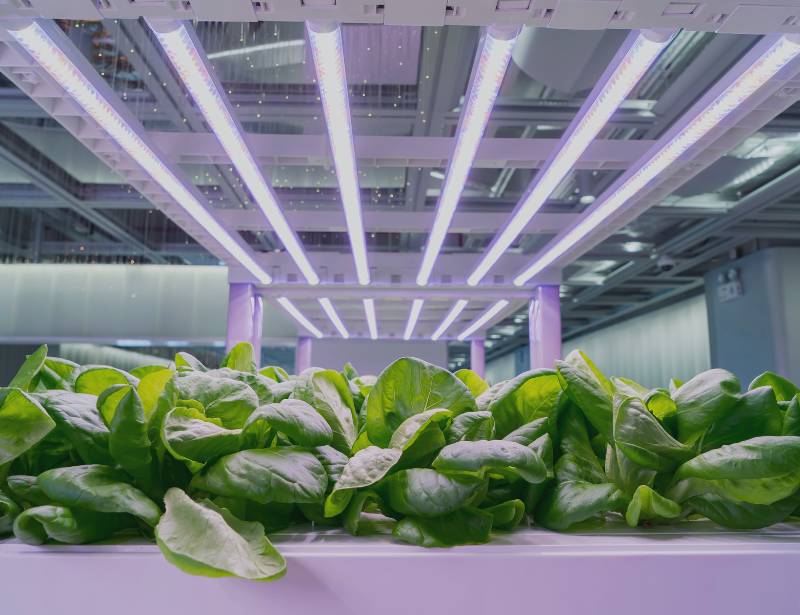
Hydroponic Equipment
As you venture into the world of hydroponics, it's essential to familiarize yourself with the key equipment that will ensure the success of your indoor garden. Here's a breakdown of some fundamental hydroponic tools:
-
Grow Lights: One of the most crucial components of any indoor hydroponic system. Since plants require light for photosynthesis, grow lights replicate the sun's spectrum, ensuring your plants receive the necessary light for growth, especially in settings where natural sunlight is limited.
-
Air Stones: These are used to increase oxygen levels in the nutrient solution. By releasing tiny bubbles into the water, air stones ensure that plant roots receive adequate oxygen, which is vital for nutrient uptake and overall plant health.
-
Water Pumps: Essential for circulating the nutrient solution, water pumps ensure that plants receive a consistent supply of nutrients. They also help in oxygenating the water, which is crucial for root health.
-
pH Meter: Maintaining the right pH level in your nutrient solution is critical for nutrient absorption. A pH meter allows you to monitor and adjust the pH levels, ensuring that your plants can readily access all the essential nutrients.
-
Nutrient Reservoir: This container holds the nutrient solution that feeds your plants. It's essential to choose a reservoir that's appropriately sized for your system and to regularly check and replenish the nutrient levels.
-
Grow Tents: For those looking to create a controlled environment for their hydroponic system, grow tents are invaluable. They provide an enclosed space where temperature, humidity, and light can be regulated, ensuring optimal growth conditions.
Hydroponic Nutrients
The success of a hydroponic system largely hinges on the nutrient solution used. Unlike soil-based gardening where plants extract essential nutrients from the earth, hydroponic plants rely entirely on the nutrient mixture provided to them. Here's what you need to know:
-
Essential Elements: Plants require a mix of macro and micronutrients for optimal growth. The primary macronutrients include Nitrogen, Phosphorus, Potassium, Calcium, and Magnesium. Among the micronutrients, which are needed in smaller quantities, Iron stands out as particularly vital, along with elements like Manganese, Zinc, Copper, Molybdenum, and Boron.
-
Balanced Solutions: It's crucial to provide a balanced nutrient solution that caters to the needs of the specific plants you're growing. For instance, leafy greens might require more Nitrogen, while fruiting plants like tomatoes might need higher levels of Phosphorus and Potassium.
-
Concentration and pH: The concentration of the nutrient solution and its pH can significantly impact plant health. Regularly monitor and adjust these parameters to ensure optimal nutrient uptake. For instance, Calcium absorption can be affected by fluctuating pH levels.
-
Organic Hydroponics: For those keen on organic farming, there are organic nutrient solutions derived from natural sources. These can be a great way to combine the benefits of hydroponics with organic farming principles, ensuring plants get essential elements like Magnesium and Iron from natural sources.
-
Commercial Hydroponics vs. DIY Hydroponics: Commercial nutrient solutions are pre-mixed and calibrated for ease of use. However, for those who prefer a hands-on approach, DIY hydroponics allows gardeners to mix their own nutrient solutions, tailoring them to specific plant needs, ensuring they have the right amounts of Nitrogen, Phosphorus, and other essential nutrients.
-
Indoor Hydroponics: When growing plants indoors, it's especially important to ensure that the nutrient solution compensates for any nutrients that plants might otherwise obtain from outdoor soil. This includes ensuring adequate levels of Calcium and Iron.
The Science Behind Hydroponics
Basic Principles
-
The essence of hydroponics revolves around the idea that plants don't necessarily need soil to grow; they need the nutrients typically found in the soil. By providing these nutrients directly through water, plants can grow faster and healthier. It's a direct-to-root buffet, and plants absolutely love it!
Types of Hydroponic Systems
-
The world of hydroponics isn't one-size-fits-all. There are several systems to choose from:
-
Aeroponics: This system involves suspending plant roots in the air and misting them with a nutrient-rich solution. It's a highly efficient method that ensures maximum oxygenation, promoting rapid plant growth.
-
Ebb and Flow (Flood and Drain): This system works by temporarily flooding the grow tray with a nutrient solution and then draining it back into the reservoir. This action ensures that plants receive adequate nutrients while also getting periods of oxygenation.
-
Nutrient Film Technique (NFT): In NFT systems, a thin film of nutrient solution continuously flows over the roots of plants, which are supported by a slight tilt. This ensures that the roots have constant access to nutrients while also being exposed to air.
-
Wick System: One of the simplest hydroponic methods, it uses wicks to draw nutrient solution from a reservoir to the plant roots. It's a passive system, meaning it doesn't require pumps or timers.
-
Drip System: A very common method, this system uses a network of tubes to deliver nutrient solution to each plant's base. It offers precise control over water and nutrient delivery.
-
Organic Hydroponics: While hydroponics typically uses mineral-based nutrient solutions, organic hydroponics employs organic nutrient sources, ensuring that the produce is free from synthetic chemicals.
-
Commercial Hydroponics: On a larger scale, it is used to produce crops for sale. These setups are often sophisticated, employing advanced technology to maximize yield and efficiency.
-
Hydroponic Gardening: This refers to the general practice of growing plants hydroponically, whether for personal consumption, sale, or simply as a hobby.
-
DIY Hydroponics: For those who prefer a hands-on approach, DIY hydroponics allows enthusiasts to build their own systems using readily available materials. It's a cost-effective way to delve into hydroponics.
-
Indoor Hydroponics: As the name suggests, this method involves growing plants hydroponically indoors, often under grow lights. It's especially popular in urban settings where outdoor space is limited
-
Plant Growth Factors
In hydroponic gardening, understanding the various factors that influence plant growth is crucial. These factors play a pivotal role in ensuring that your plants thrive and produce optimal yields. Let's delve into some of the key growth factors:
-
Light: it is fundamental for plant growth. In hydroponics, especially indoor hydroponics, the source, duration, and quality of light can significantly impact plant health. Grow lights are often used to provide plants with the necessary light spectrum, ensuring they undergo photosynthesis efficiently.
-
Temperature: Just like traditional gardening, temperature plays a crucial role in hydroponics. Each plant has its preferred temperature range. Too cold or too hot, and the plants can become stressed or even die. Maintaining a consistent temperature, suited to your specific plants, is essential.
-
Humidity: Humidity levels can influence how plants absorb water and nutrients. In a hydroponic setup, maintaining the right humidity ensures that plants can transpire effectively, which in turn affects nutrient uptake.
-
pH: The pH level of the nutrient solution directly affects a plant's ability to absorb nutrients. If the pH is too high or too low, certain nutrients become less available, potentially leading to nutrient deficiencies. Regularly monitoring and adjusting the pH of your nutrient solution is vital.
-
Nutrient Solution: The lifeblood of any hydroponic system. The nutrient solution provides plants with all the essential minerals they need to grow. It's crucial to ensure that the solution is balanced, providing all the necessary macro and micronutrients in the right proportions.
-
Carbon Dioxide (CO2): Plants require CO2 for photosynthesis. In enclosed hydroponic systems, especially indoor hydroponics, ensuring there's an adequate supply of CO2 can enhance plant growth and productivity.
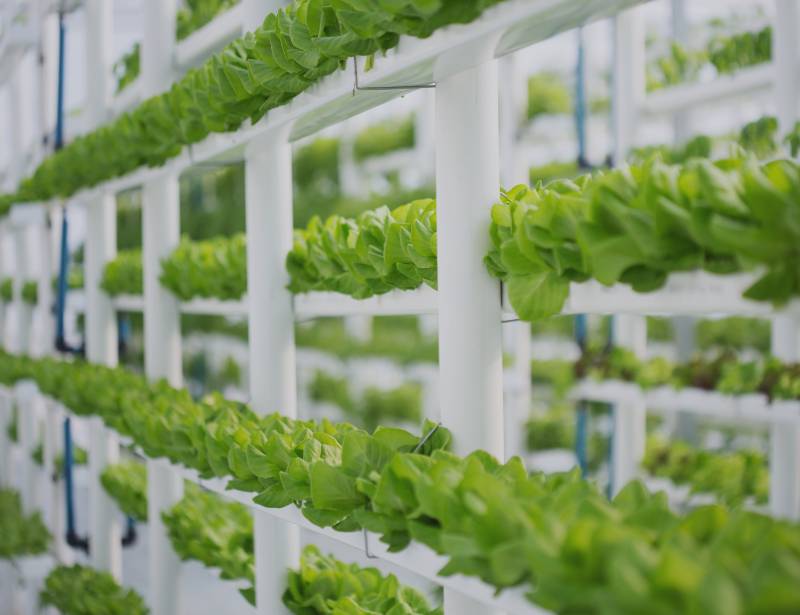
Benefits of Hydroponics
Faster Plant Growth
One of the most compelling advantages of hydroponics is the accelerated growth rate observed in plants. But why do plants in hydroponic systems grow faster? The answer lies in the direct access they have to essential nutrients. In traditional soil gardening, plants expend energy searching for nutrients, but in hydroponics, these nutrients are readily available, allowing plants to focus their energy on growth. This efficient nutrient delivery system often results in a significantly reduced time to maturity. For instance, crops like lettuce, which typically take about 60 days to harvest in soil, can be ready in as little as 30 days in a well-maintained hydroponic system.
Efficient Use of Water
Water is a precious resource, and with global concerns about water scarcity on the rise, any method that conserves water is a boon. Hydroponics is incredibly water-efficient. Traditional farming and gardening methods can be wasteful, with water seeping below the root zone or evaporating from the soil surface. In contrast, hydroponic systems use up to 90% less water. How is this achieved? The water in these systems is recirculated, ensuring that plants take up what they need, and the rest is returned to the reservoir for reuse. This closed-loop system minimizes wastage, making hydroponics an eco-friendly and sustainable choice, especially in regions with limited water availability.
Space-saving and Scalability
Urbanization and the resultant space crunch have made it challenging for many to pursue traditional gardening. This is where hydroponics comes into play, offering a space-efficient solution. Hydroponic systems can be set up vertically, allowing for multiple layers of crops, and maximizing yield per square foot. This vertical farming approach is not only space-saving but also reduces the carbon footprint by cutting down transportation costs when grown in urban settings.
Moreover, hydroponics is incredibly scalable. For beginners, a small countertop herb garden might be the starting point. As one gains experience and confidence, they can expand to larger systems, even converting entire rooms or building greenhouses dedicated to hydroponic cultivation. This flexibility ensures that whether you're a hobbyist with a small balcony or an entrepreneur with an acre of land, hydroponics can be tailored to meet your needs.
Setting Up a Hydroponic System at Home
Embarking on the hydroponic journey might seem daunting at first, but with the right tools and guidance, you can set up your own system at home with ease. Here's a detailed breakdown to get you started:
Materials Needed
-
Reservoir: This is a container that will hold the nutrient solution. It can range from a simple bucket for smaller systems to large tanks for expansive setups.
-
Air and Water Pumps: The air pump ensures that your nutrient solution remains oxygenated, which is crucial for root health. The water pump, on the other hand, circulates the nutrient solution, ensuring that it reaches all the plant roots.
-
Growing Medium: Unlike traditional gardening, hydroponics doesn't use soil. Instead, you'll need an inert growing medium. Popular choices include:
-
Rockwool: A fibrous material that's excellent for seed germination and plant growth.
-
Perlite: Lightweight volcanic glass that offers good aeration and drainage.
-
-
Nutrient Solution: Plants need nutrients to grow, and in hydroponics, these are provided in the form of a water-soluble solution. Ensure you choose a balanced solution that caters to the needs of the specific plants you're growing.
-
Plants or Seeds: Depending on your preference, you can start with seeds or young plants. If you're a beginner, starting with plants might be easier as it offers a visual gauge of how well your system is working.
Steps to Set Up
-
Choose a Suitable System: There are various hydroponic systems available, from Deep Water Culture (DWC) to Nutrient Film Technique (NFT). Your choice will depend on your space, budget, and the plants you wish to grow.
-
Set Up the Reservoir: Place your reservoir in a location where it won't be disturbed. Ensure it's clean to prevent any potential contamination.
-
Add Water to the Reservoir: Fill it up, but leave some space at the top to prevent any overflow.
-
Mix in the Nutrient Solution: Follow the instructions on your nutrient mix to ensure the correct concentration. Stir well to ensure even distribution.
-
Install the Air and Water Pumps: Place the air pump outside the reservoir and drop the air stone into the water. The water pump should be submerged in the nutrient solution, with tubes leading to the plants.
-
Introduce Plants to the System: If you're using seeds, place them in the growing medium until they germinate. If you're using plants, ensure their roots make contact with the nutrient solution.
-
Monitor and Adjust pH Levels: The ideal pH level for most hydroponic systems is between 5.5 and 6.5. Regularly check the pH and adjust using pH up or down solutions as necessary.
-
Watch Your Plants Thrive: With everything set up, all that's left is regular monitoring. Ensure the nutrient solution remains at the right level, top up when necessary, and watch as your plants grow faster and healthier than you've ever seen before!
Caring for Your Hydroponic Garden
Creating a hydroponic system is just the beginning. To ensure your plants not only survive but thrive, ongoing care and maintenance are essential. Here's a deeper dive into the key aspects of hydroponic garden care:
Monitoring pH Levels
-
Importance of pH Balance: The pH level, which measures the acidity or alkalinity of a solution, plays a pivotal role in the health of your hydroponic garden. It directly affects the plant's ability to absorb nutrients. If the pH is too high or too low, certain nutrients become less available, potentially leading to nutrient deficiencies.
-
Ideal pH Range: For most plants grown hydroponically, the sweet spot lies between 5.5 and 7.0. Within this range, plants can optimally absorb all the necessary nutrients from the solution.
-
Adjusting pH Levels: Over time, as plants uptake nutrients, the pH of the solution can shift. Regularly monitor the pH using pH meters or test kits. If adjustments are needed, use pH up or down solutions. Remember, always make adjustments gradually and retest to ensure you've achieved the desired pH level.
Nutrient Solutions
-
The Plant's Diet: Think of the nutrient solution as the food for your plants. Just as we need a balanced diet to stay healthy, plants require a mix of macro (Nitrogen, Phosphorus, Potassium) and micronutrients (such as Iron, Manganese, and Zinc) for optimal growth.
-
Choosing the Right Mix: There are various pre-mixed hydroponic nutrients available in the market. While these are convenient, it's essential to choose one that aligns with the specific needs of the plants you're growing. For instance, leafy greens might require a different nutrient ratio compared to fruiting plants like cucumbers, strawberries or even peppers.
-
Refreshing the Solution: Over time, as plants absorb nutrients, the composition of the solution changes. To ensure consistent nutrient availability, it's a good practice to replace the nutrient solution every couple of weeks. Additionally, keep an eye on the solution's color and clarity. If it becomes cloudy or develops an off-putting odor, it's time for a change.
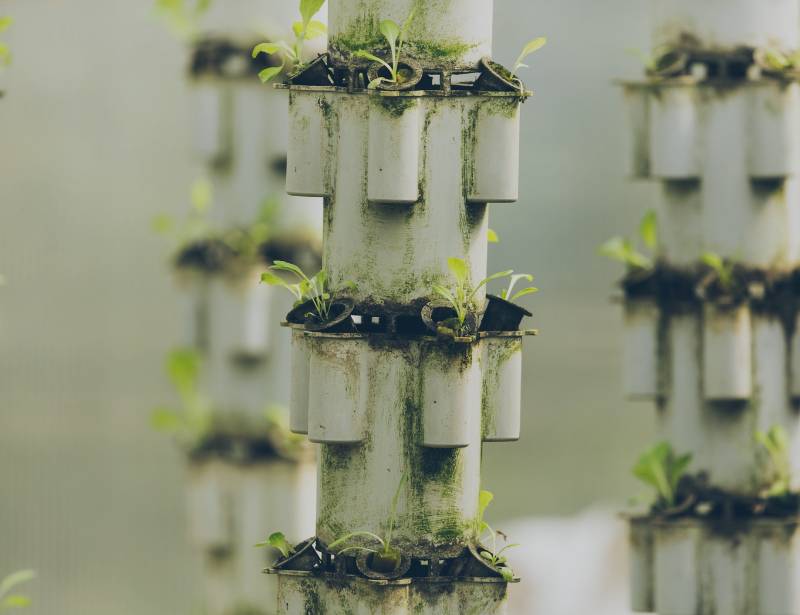
Challenges in Hydroponics and Solutions
While hydroponics offers a plethora of benefits, like any gardening method, it comes with its own set of challenges. However, with knowledge and proactive measures, these challenges can be effectively managed.
1. Algae Growth
-
Challenge: Algae thrive in nutrient-rich, moist environments, making hydroponic systems a prime target. Not only can they clog systems and compete with plants for nutrients, but they can also become a breeding ground for pests.
-
Solution: To combat algae:
-
Use opaque or solid-colored reservoirs to prevent light penetration, as algae require light to grow.
-
Regularly clean and sanitize your system.
-
Consider adding beneficial microbes that compete with algae for resources.
-
2. Nutrient Imbalances
-
Challenge: Striking the right nutrient balance is crucial in hydroponics. An excess or deficiency of certain nutrients can lead to poor plant growth or even diseases.
-
Solution:
-
Regularly monitor the nutrient solution's composition and pH.
-
Refresh the nutrient solution periodically.
-
Use quality nutrient mixes and follow recommended dosages.
-
3. Disease and Pest Infestations
-
Challenge: Just like soil-based plants, hydroponic plants are susceptible to diseases and pests. The closed environment can sometimes exacerbate the spread.
-
Solution:
-
Implement a strict hygiene protocol. Sterilize equipment and avoid introducing pests from outside.
-
Use organic insecticides or beneficial insects to combat pests.
-
Ensure proper air circulation to prevent fungal and bacterial growth.
-
4. System Failures
-
Challenge: Being a technology-driven method, hydroponics relies on equipment like pumps. A failure can disrupt the nutrient supply, jeopardizing plant health.
-
Solution:
-
Regularly inspect and maintain equipment.
-
Have backup systems or manual intervention plans in place.
-
Invest in quality equipment with good reviews and warranties.
-
5. Complexity for Beginners
-
Challenge: For those new to gardening or transitioning from soil-based methods, hydroponics can seem complex and overwhelming.
-
Solution:
-
Start with simpler hydroponic systems like the Deep Water Culture (DWC) before progressing to more complex setups.
-
Join hydroponic communities, attend workshops, or seek guidance from experienced hydroponic gardeners.
-
Educate yourself through books, online courses, and tutorials.
-
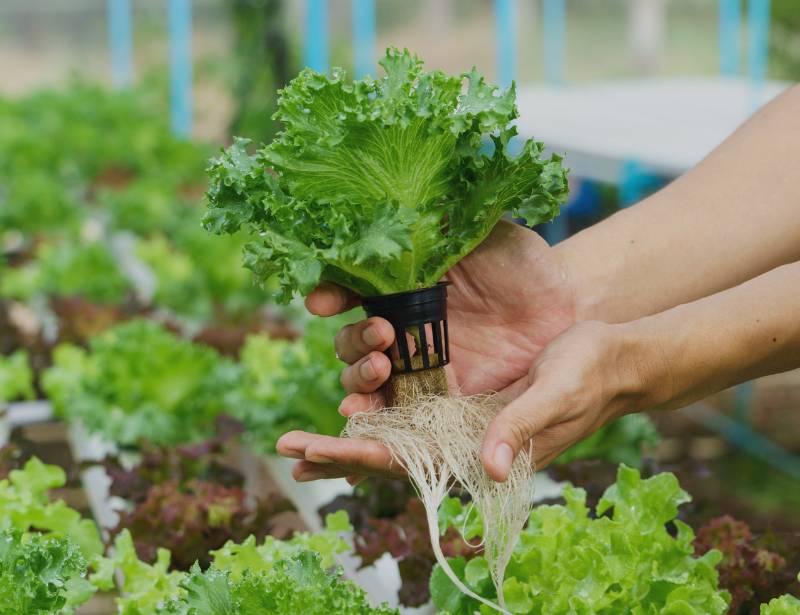
Hydroponics vs. Traditional Soil Gardening
Gardening, in its essence, is the art and science of cultivating plants. While the traditional method using soil has been practiced for millennia, hydroponics presents a modern twist to this age-old activity. Let's delve into the differences and advantages of each method.
Traditional Soil Gardening
-
Natural Approach: Soil-based gardening is as old as civilization itself. It's the natural way plants grow, drawing nutrients from the earth. Many gardeners appreciate the tactile experience of working with soil and the connection it offers to nature.
-
Weeding and Tilling: One of the significant challenges of soil gardening is the constant battle against weeds. These unwanted plants compete with your crops for nutrients and space. Regular tilling and weeding are necessary to keep them at bay.
-
Watering Guesswork: Determining the right amount of water for plants can be tricky. Overwatering can lead to root rot, while underwatering can stress plants.
-
Seasonal Limitations: Traditional gardening is often at the mercy of seasons. Harsh winters or scorching summers can limit what you grow and when.
Hydroponics
-
Efficiency and Control: Hydroponics offers a high degree of control over the growing environment. Nutrient levels, pH, and moisture are all adjustable, allowing for optimal plant growth conditions.
-
No Weeds, Less Pests: Without soil, the common woes of weeding are eliminated. Additionally, the closed environment and absence of soil can reduce the occurrence of many soil-borne pests and diseases.
-
Water Conservation: Hydroponic systems, being closed-loop, recirculating water, leading to significant water savings. It's estimated that hydroponics uses up to 90% less water than traditional methods.
-
Year-round Gardening: With hydroponics, you're not bound by seasons. Whether it's the peak of summer or the depths of winter, you can grow your favorite crops. This is especially beneficial for those living in regions with short growing seasons.
-
Space Efficiency: Hydroponic systems can be set up vertically, making them ideal for urban environments where space is at a premium.
The Environmental Impact of Hydroponics
In today's world, where environmental concerns are at the forefront of many discussions, the methods we choose for food production play a pivotal role. Hydroponics, beyond its immediate gardening benefits, presents several environmental advantages that can contribute to a greener and more sustainable future.
1. Water Conservation
-
Efficiency in Usage: Traditional agriculture is one of the largest consumers of freshwater resources. Hydroponics, with its closed-loop system, drastically reduces water consumption. The water in these systems is recirculated, ensuring that plants take up what they need, and the rest is returned to the reservoir for reuse. This results in up to 90% less water used compared to conventional farming methods.
-
Reduced Runoff: In traditional agriculture, excess water often carries away fertilizers and pesticides, leading to harmful runoff that can contaminate local waterways. With hydroponics, there's minimal to no runoff, protecting local ecosystems.
2. Decreased Need for Pesticides
-
Controlled Environment: The controlled environment of hydroponic systems reduces the incidence of pests and diseases. This means there's a decreased reliance on chemical pesticides, which can have harmful environmental impacts.
-
Healthier Produce: With fewer pesticides, the produce is not only healthier for consumption but also reduces the environmental burden of chemical runoff and residues.
3. Urban Agriculture Potential
-
Reducing the Carbon Footprint: Growing food closer to where it's consumed means reduced transportation distances. This can significantly lower the carbon footprint associated with transporting produce from rural farms to urban consumers.
-
Revitalizing Urban Spaces: Unused urban spaces, like rooftops or abandoned buildings, can be transformed into hydroponic farms. This not only produces food but also adds greenery to urban landscapes, aiding in temperature and improving air quality.
-
Local and Fresh Produce: Urban hydroponic farms can provide local communities with fresh, locally sourced produce year-round, reducing the need for long-distance imports and promoting community health and well-being.
The Future of Hydroponics in Residential Settings
The rapid pace of urbanization, coupled with increasing concerns about sustainability and food security, has led to a reimagining of how we approach agriculture. Hydroponics, with its space-efficient and resource-conserving attributes, is emerging as a frontrunner in this new age of urban farming. Let's explore what the future might hold for hydroponics in residential settings.
1. Urbanization and Space Constraints
-
Maximizing Limited Spaces: As cities expand and living spaces become more compact, traditional gardens are often a luxury many can't afford. Hydroponics offers a solution by allowing residents to cultivate plants in small areas, be it a tiny balcony, a windowsill, or even a wall.
-
Vertical Farming: One of the most promising aspects of hydroponics is vertical farming. By stacking plants vertically, one can exponentially increase yield per square foot. This means even a small apartment can potentially produce a significant amount of fresh produce.
2. Sustainable Food Production
-
Reducing Carbon Footprint: Growing food at home or within the community reduces the need for transportation, cutting down the carbon emissions associated with food logistics.
-
Year-round Cultivation: Unlike traditional farming, which is often season-dependent, hydroponics allows for year-round cultivation. This ensures a consistent supply of fresh produce, irrespective of external weather conditions.
3. Health and Well-being
-
Fresh and Organic Produce: With control over the growing environment, residents can ensure they're consuming fresh, organic produce free from harmful pesticides and chemicals.
-
Therapeutic Benefits: Beyond just food production, tending to a garden, even a hydroponic one, has therapeutic benefits. It offers a break from the digital world, reduces stress, and fosters a connection with nature.
4. Community Engagement
-
Shared Hydroponic Spaces: The future might see more community-driven hydroponic gardens where residents come together to cultivate and share the produce. Such initiatives not only promote sustainable living but also foster community bonding.
-
Educational Opportunities: Hydroponic setups in residential settings can serve as educational tools, especially for children. They can learn about plant growth, nutrition, and sustainability, all while getting hands-on gardening experience.
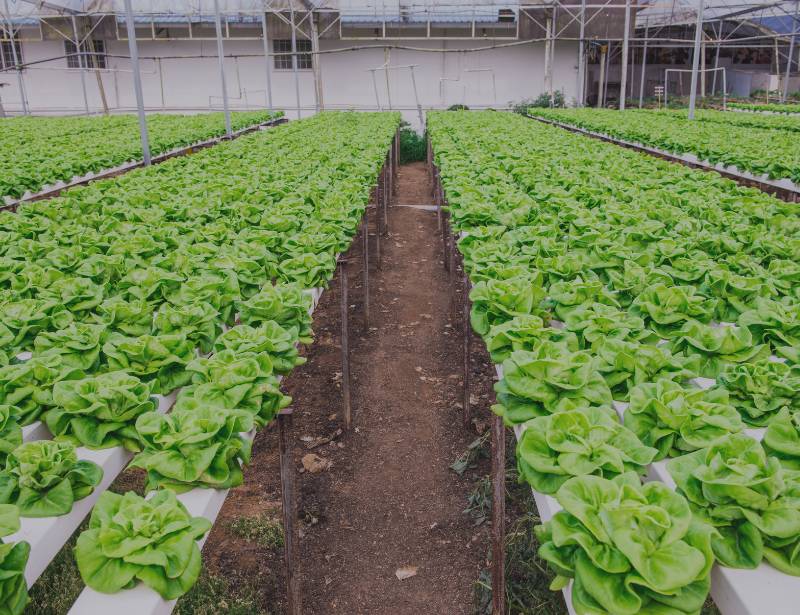
Conclusion
In the ever-evolving world of agriculture and gardening, hydroponics stands out as a beacon of innovation. It's not just a mere alternative to traditional soil-based cultivation; it's a transformative approach that challenges and redefines our conventional understanding of plant growth.
-
Redefining Agriculture: Hydroponics transcends the boundaries set by soil and climate. It offers a glimpse into a future where plants can be cultivated in the harshest of environments, from arid deserts to space stations. This method showcases that with the right tools and techniques, limitations can be turned into opportunities.
-
Sustainability and Efficiency: In an age where sustainability is not just a buzzword but a necessity, hydroponics offers solutions to some of the most pressing environmental challenges. Whether it's water conservation, reduced pesticide use, or efficient land use, hydroponics is at the forefront of sustainable agriculture.
-
Empowering Individuals: One of the most exciting aspects of hydroponics is its accessibility. It's not limited to large-scale farmers or corporations. From hobbyists in urban apartments to educators in schools, hydroponics empowers individuals to take control of their food sources, promoting healthier and more conscious living.
-
A Growing Community: The rise in hydroponics has fostered a global community of enthusiasts, innovators, and pioneers. This community shares knowledge, celebrates successes, and collectively troubleshoots challenges, ensuring that the field continues to grow and evolve.
In wrapping up, hydroponics is not just a fleeting trend; it's a paradigm shift in agriculture and gardening. Its benefits, both personal and environmental, combined with its adaptability, make it an enticing venture for anyone interested in plant cultivation. So, as we stand on the brink of this green revolution, the question isn't just whether you're ready to join, but how soon you'll dive in and experience the wonders of hydroponic gardening firsthand.
FAQs
-
Is hydroponics organic?
-
It can be! It depends on the nutrient solutions used. Organic hydroponics uses natural nutrient sources.
-
-
Can all plants be grown hydroponically?
-
Most plants can be grown hydroponically, but some, like root vegetables, might require more specialized systems.
-
-
How often should I change the nutrient solution?
-
Every 2-3 weeks is a general guideline, but always monitor plant health and adjust accordingly.
-
-
Do hydroponic plants taste different?
-
Many gardeners report a fresher, more vibrant taste from hydroponically grown produce.
-
-
Is hydroponics the future of farming?
-
While it's not the only future, it's a significant and sustainable part of it, especially in urban and drought-prone areas.
-
